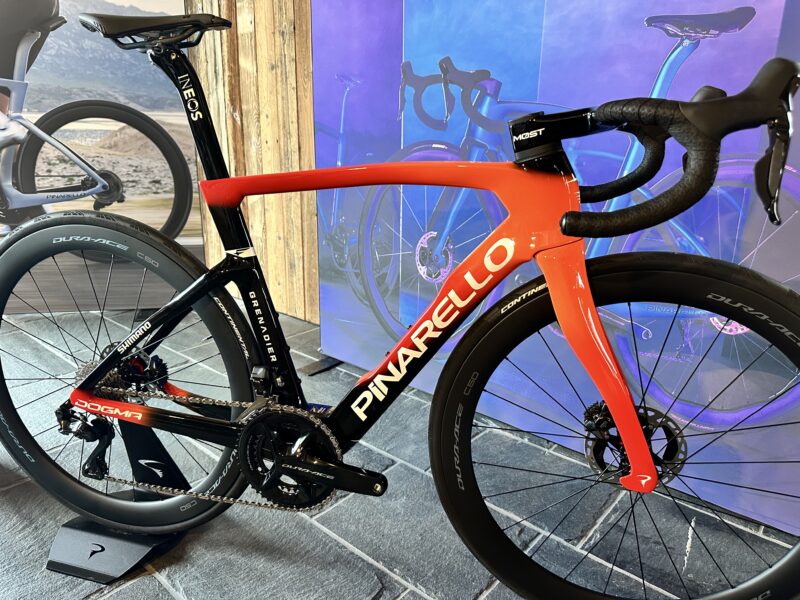Picking up a bike for under $500
Entry-level bikes can be a great buy, as long as you understand just what it is you’re getting for your money, writes Jon Miller.

The top end of the bike market is well catered for, with the cost of high-quality racers ranging from a few thousand dollars up to $40,000. But what about the lower end? There are plenty of people who have a limited budget but still want to enjoy the pleasures of riding, and others who would simply prefer a no-fuss run-around. Are they being adequately catered for?
In the past, the standard of entry-level bikes (those in the $300-$500 range) may have been questionable, but that has now changed. With demand growing, bike manufacturers have responded by offering more models with better components, and there’s never been a better choice.
You can buy mountain bikes, hybrids, flat-bar road bikes and town bikes, but there are still limitations in the quality you can expect. It is important to know what it is you are buying and make an informed choice on whether what you are getting will be suitable for the riding you are going to do.
Frames, tyres and gears
Typically, what you will get in this price range is the traditional diamond-shaped steel frame with straight handlebars and either 26 inch or 700c wheels with road or hybrid tyres. If you are going to be riding on sealed roads, try to avoid the knobbly mountain-bike tyres; their grip and weight will make pedalling a laborious chore.
The frame will have mounting points for mudguards and a rear rack. Most have at least 21 gears, which are generally lower than the gears on a road bike but higher than mountain bike gearing. They will have cantilever or v-brakes, which provide more than adequate stopping power.
Understandably, the components aren’t going to be the top of the range the finish may be a bit rough looking, and the total weight of the bike will be on the heavy side. But if you spend some time and shop around, you will be able to find a very serviceable machine for under $500.
The most important thing when choosing an entry level bike is to be aware of its limitations. They may have an upright riding position and the flat bars of a mountain bike, and some
even have suspension (probably best avoided; see below) but they’re not robust enough for rugged off-road riding. Similarly, they may have smooth tyres and 700c wheels but they won’t have big enough gears, the low riding position or the light weight to enable you to keep up with any pelotons.
Supermarket bargain?
You may be tempted to go into your nearest large department store – even Coles sometimes sells adult bikes – to save more money. This can be a false economy and definitely not
recommended unless you know a bit about bike mechanics yourself. New bikes are shipped to retailers in boxes; if you buy your bike from a bike shop, it will be assembled by a trained mechanic with lots of experience who knows exactly what he’s doing. If you buy it from a chain store, it will most likely be put together by somebody who knows a little bit about bikes and is following the manufacturer’s instruction sheet in badly translated English.
Several years ago, my sister bought a bike from a chain store as a Christmas present for her son, my nephew. I agreed to have a look over it before the big day to make sure everything
was okay. I had to work on it for more than two hours, on almost every part of the bike, from aligning the brakes to greasing the hubs, before it was finally ready to ride. If she’d bought it from a bike shop, this work would have already been done.
Online savings
Buying over the internet is another option for saving money but you’ll most likely have to do some assembly yourself. You won’t get it adjusted to fit you and you won’t get the
traditional free service that most bike shops throw in. If you take it to a bike shop they may assemble and adjust it for you, but what they charge could more than match any on-line savings you made.
When you buy from a bike shop, you’re buying more than just a bike. You’re also getting professional advice, the opportunity to test ride before you buy, a free service, after-sales support and peace of mind.
For a little bit more
If you are willing to spend a little extra – about $100 will normally do it – you can often get the next model up from the most basic bike in the range. These bikes often have wheels with double-walled rims and usually a better rear derailleur.
This better rear derailleur will have smoother shifting, is less likely to malfunction and lasts longer, but the double-walled rims are the most significant improvement. They’re stronger, will last longer, and are safer. If you weigh over 90kg or plan on carrying a lot of luggage, you’re probably better off paying the extra; each wheel on a budget bike will cost about $80 each to replace if they buckle under pressure.
You can always upgrade parts to better quality ones as the originals wear out, but this is an expensive way to go about it. Individual parts are vastly more expensive than when they are bought as part of an assembled bike. If you’re likely to ride the bike so much that you will be wearing out parts, consider a bike with more durable components in the first place.
Making the right contact
There are three points of contact with a bicycle: hands, feet and bum. It’s important that each of these contact points is made as comfortable as possible as this will greatly enhance how much you enjoy riding your bike. It’s easy to think of saddle comfort as being a wide, padded seat but this isn’t always true. For a saddle to be comfortable, your sit bones (the bony parts of your bum) need to be resting on the saddle’s widest part. Padding helps to a certain extent but if the saddle’s the wrong width for your sit bones, your body weight will be resting on the
soft tissue, causing pain and discomfort.
Bar ends can be an excellent addition on a bike with straight handlebars. On all but the shortest rides, your hands and forearms will soon get tired being in the same position all the time. Bar ends can provide relief, and can also help when pulling up a hill. If your bike doesn’t come with bar ends, it is well worth spending the extra $15-20 on a pair.
The third point of contact is the pedals. You’ll most likely be riding these bikes in normal – that is, non-cycling specific – shoes. So look for large pedals which will support your foot. Plastic pedals are generally better than metal because the metal ones have ridges that can cut into the soles of your shoes.
Weighed down by suspension
A handful of bikes in this price range come with front suspension. A bike with front suspension for a few hundred dollars may seem like a bargain but that isn’t really so. Suspension forks are quite expensive, so all of the other components will have to be of lesser quality to keep the bike inside a lower price point. You only really need suspension when riding over rough ground and the other parts of the bike probably aren’t tough enough for these conditions.
Suspension also adds weight and robs efficiency from your pedalling, both of which mean you have to work harder to get up hills. Suspension will add a little comfort when you’re riding
over pot-holes and other irregularities in the road surface, however you’ll get the same effect by relaxing your grip on the handlebars and flexing your elbows as you go over the bumps.
Another trap for the unwary is the suspension seat post. Many people swear by these and the comfort they bring. A good-quality suspension seat post will cost at least $70, making it too
expensive for a manufacturer to put on a budget bike. Instead, they will put a much cheaper one in which will soon become spongy and uncomfortable. If you must have a suspension seat post, you’re probably better off buying it separately.
Value added
Take your time before making a purchase, go for some test rides, and ask plenty of questions. The pleasure which is inherent in bike riding is greatly enhanced if your bike suits the sort of
riding you do. There’s no point buying a budget bike on price alone then finding you don’t use it much because it’s hard to ride. Having said that, there are some great value bikes under $500, and there may be one just perfect for you.
Also
consider . . .
- If you’re not after the latest and greatest, spring is the best time of year to buy a bike. Manufacturers are bringing the new season’s models on to the market so bike shops are often offering good deals on the previous year’s model to make room for the new stock.
- Do you really need 21 gears or more? Maybe a three-speed hub gear bike is enough for the riding you plan to do. If you shop around, you may find one for the same price and it should require less maintenance.
- For those who like to keep it simple, consider forgetting gears completely and opt for a single-speed (not to be confused with a fixed-gear bike). A single-speed bike should have better parts than a geared bike for the same price, because of the savings made with having no gears. These bikes are also much easier and cheaper to maintain because of their simplicity.
- A second-hand reconditioned bike can have better parts than a brand-new entry level bike. Don’t forget to include room in your budget for extras such as a helmet, pump, lights, lock, mirror, etc.
Ride On content is editorially independent, but is supported financially by members of Bicycle Network. If you enjoy our articles and want to support the future publication of high-quality content, please consider helping out by becoming a member.








Very informative!!!
Could I swap my 20 yo Shogun Metro SE for something equivalent on the market today?
Answer to former cycling enthusiast: Why swap the Shogun? It,s a good solid bike made of chromoly steel, a bit heavy, perhaps, but much more durable and practical than the alloy-framed rubbish available nowadays. Steel is real. Also, the quill stems on the older bikes make adjustable stems a possibility, allowing for greater comfort and versatility. There are many bikes of this vintage out there which are well worth having. I am looking for such a steed myself, as a matter of fact.